In 2025, dropshipping in Vietnam is no longer a hidden opportunity—it’s becoming a mainstream strategy for global sellers looking to diversify beyond traditional sourcing hubs. Over the last decade, Vietnam has transformed into one of Asia’s fastest-growing e-commerce and manufacturing centers. With its strong textile and apparel base, competitive costs in footwear and accessories, and an emerging presence in electronics assembly, the country is increasingly seen as both a production powerhouse and a consumer market worth tapping into.
For dropshippers, Vietnam combines two unique advantages: access to reliable factories producing goods at lower costs than many competitors, and a young, digitally connected domestic market where platforms like Shopee, Lazada, and Tiki are booming. International importers appreciate Vietnam’s growing role in global supply chains, while local consumers are eager adopters of online shopping—creating opportunities for sellers targeting both export and local markets.
As trade diversification accelerates in 2025, more entrepreneurs are asking: Can Vietnam become the next big dropshipping hub after China? This guide explores the best suppliers, platforms, and trends shaping Vietnam’s dropshipping landscape, with actionable insights on how to source and sell effectively.
The State of E-Commerce & Dropshipping in Vietnam

Vietnam’s e-commerce market in 2025 is developing at a remarkable speed and scale. For sellers considering dropshipping in Vietnam, it represents both a production base and a growing consumer market with rising digital adoption.
Market Size & Growth Momentum
In the first half of 2025, online retail sales across major platforms reached approximately VND 202.3 trillion (about USD 7.8 billion), marking a 41.5% year-on-year increase. Industry reports valued the 2024 market at over USD 24 billion, with projections to approach USD 44 billion by 2027 under a compound annual growth rate exceeding 23%. This rapid growth reflects deeper structural changes: improved internet access, the spread of mobile commerce, and more efficient logistics and payment systems.
Consumer Behavior Trends
Vietnamese shoppers are increasingly digital-first. Mobile devices now account for the majority of e-commerce transactions, and younger consumers—especially Gen Z—blend social media with shopping through livestreams and influencer recommendations. Bargain hunting remains a strong habit: free shipping offers, flash sales, and discount vouchers drive conversions. At the same time, more consumers are prioritizing reliability, pushing weaker or less professional sellers out of the market.
Platform Dynamics
A handful of platforms dominate Vietnam’s digital retail scene. Shopee leads in traffic and market share, supported by logistics partnerships and aggressive promotions. TikTok Shop has quickly gained traction with content-driven discovery, particularly for fashion and beauty products. Local platforms such as Lazada, Tiki, and Sendo remain competitive in categories like electronics, local brands, and household goods. The rise of “shoppertainment”—where content and commerce merge—has become a defining feature of the market.
Dropshipping & Cross-Border Trade
Vietnam is also positioning itself as a cross-border e-commerce hub. Many manufacturers are open to lower MOQs, making them accessible for small to mid-sized dropshippers. Some sellers combine local and international strategies—testing products in Vietnam before scaling to Southeast Asia or beyond. Ongoing trade facilitation reforms, including streamlined customs procedures, are further reducing barriers to international expansion.
Key Challenges
Despite strong growth, challenges remain. Logistics outside major urban centers can be inconsistent, with higher costs and longer delivery times. Payment habits are still shifting, and cash-on-delivery continues to account for a significant share of transactions, raising return and cash flow risks. Intense competition in popular niches like fashion and electronics is compressing margins. In addition, regulatory scrutiny is increasing: authorities have already required some foreign platforms to suspend operations for failing to comply with local registration requirements.
Why Choose Vietnam for Your Dropshipping Business
Vietnam has quickly established itself as one of Asia’s most attractive destinations for entrepreneurs who want to start or scale a dropshipping business. In 2025, its unique combination of cost efficiency, manufacturing strengths, and consumer trends makes it stand out as more than just a secondary option to China—it is becoming a hub in its own right.
Competitive Production Costs
Vietnam maintains relatively low labor and operational costs compared to neighboring markets. This cost advantage translates directly into better margins for dropshippers, especially in price-sensitive categories such as apparel, footwear, and household items.
Strong Manufacturing Base
The country has built global recognition in textiles, garments, and footwear. Over the past decade, it has also expanded into electronics assembly, furniture, and eco-friendly goods. For dropshippers, this means a diverse catalog of products that can appeal to international buyers looking for quality and variety.
Strategic Trade Position
Vietnam borders China and is deeply integrated into regional supply chains. Its participation in trade agreements such as the CPTPP and RCEP allows exporters to enjoy preferential tariffs in many key markets. For dropshipping businesses, this means smoother cross-border flows and improved competitiveness when targeting the US, Europe, or intra-Asia buyers.
Fast-Growing E-Commerce Market
Vietnam itself is a young, digital-first consumer market. With more than 70% internet penetration and one of Southeast Asia’s fastest-growing middle classes, the domestic e-commerce sector is booming. Dropshippers not only source from Vietnam but can also sell directly into the Vietnamese market through platforms like Shopee, Lazada, or TikTok Shop.
Rising Demand for Sustainable Products
Vietnam is well-positioned to meet global consumer demand for eco-friendly products. Its thriving handicraft and bamboo industries, along with a growing focus on sustainable textiles, give dropshippers access to a catalog of green alternatives that align with 2025’s global trends.
Government Support & Digital Infrastructure
The Vietnamese government continues to invest heavily in logistics, digital transformation, and customs modernization. Combined with the country’s growing fintech adoption and mobile payment systems, it is now easier for foreign businesses to engage in dropshipping with local partners than ever before.
Best Dropshipping Suppliers in Vietnam (2025 List)
Finding the right supplier is the cornerstone of any dropshipping business. In Vietnam, the supplier ecosystem is maturing quickly, offering opportunities across apparel, footwear, handicrafts, electronics, and eco-friendly products. Below are some of the best options for 2025, balancing international reliability with local specialization.
1. CJdropshipping – Global Reach with Vietnam Sourcing Access
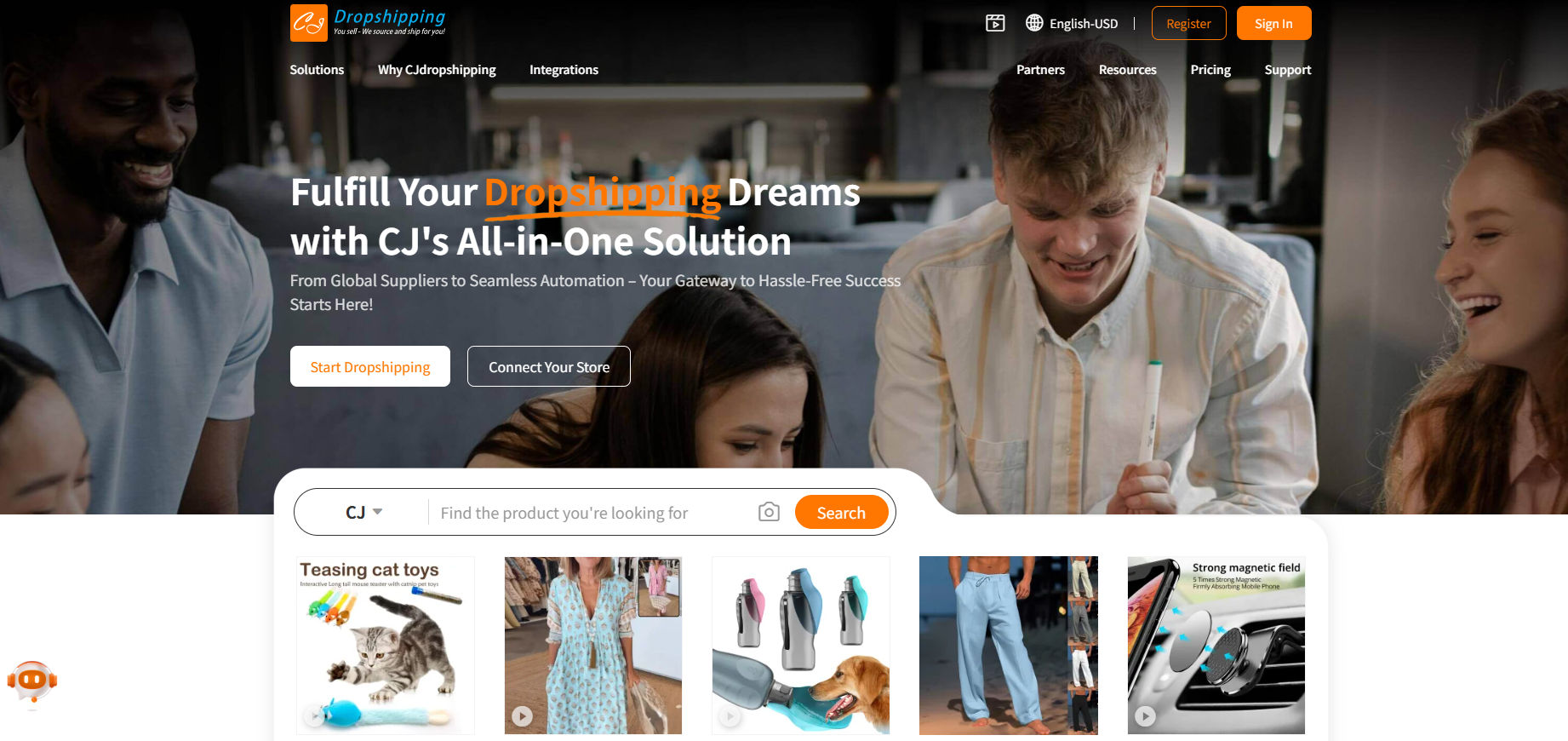
CJdropshipping is more than a supplier—it is an all-in-one dropshipping ecosystem. For entrepreneurs exploring Vietnam, CJ provides a bridge between local manufacturers and global markets.
-
Strengths: Extensive catalog, on-demand product sourcing, POD services, and automated fulfillment.
-
Global Integration: Works seamlessly with Shopify, WooCommerce, eBay, TikTok Shop, and other platforms.
-
Why choose CJ: You can test Vietnamese products without committing to a large inventory, while still enjoying global warehousing options in the US and Europe for faster delivery.
CJdropshipping is particularly valuable for sellers who want to diversify sourcing beyond China but still need the reliability of a platform with established logistics and automation.
2. Alibaba Vietnam Suppliers
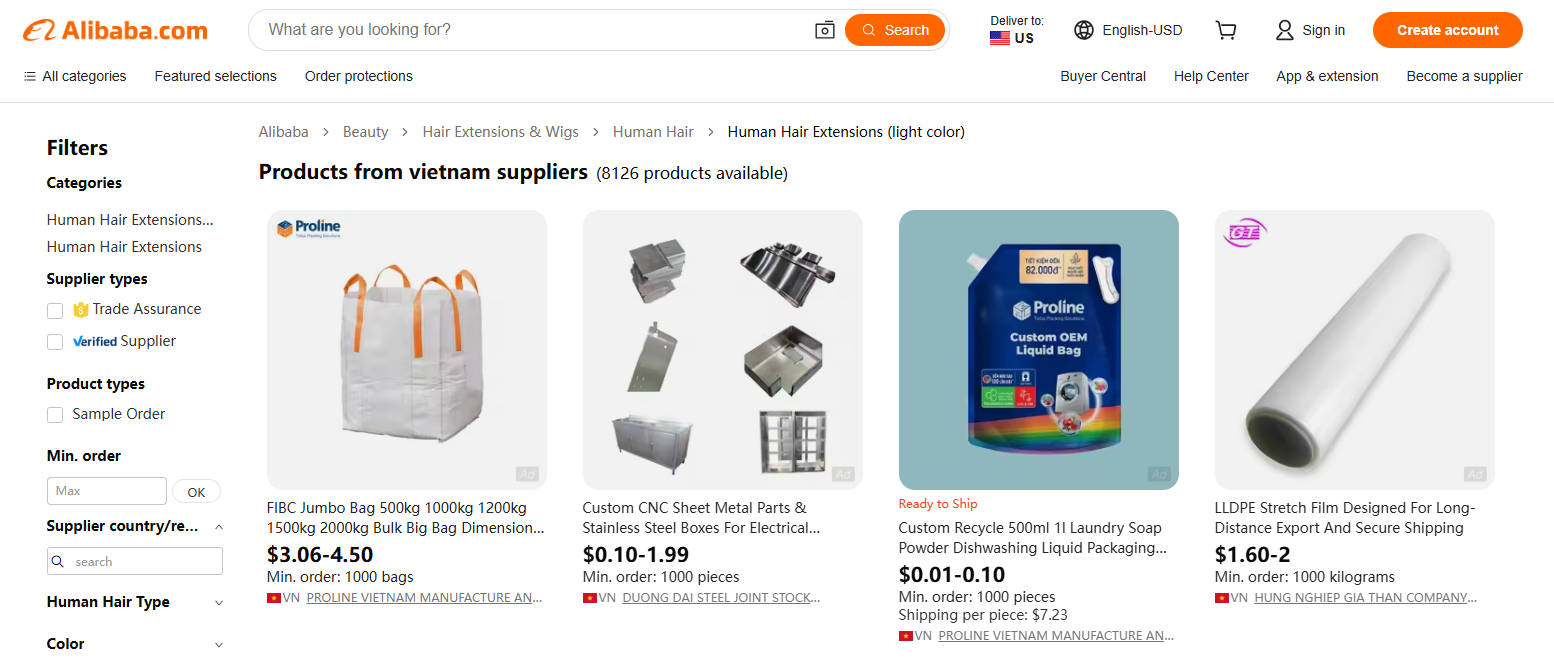
Alibaba remains a gateway to Vietnam’s exporters. Thousands of Vietnamese factories list apparel, furniture, and handicrafts here.
-
Strengths: Large supplier pool, competitive pricing, and international visibility.
-
Best use case: Ideal for bulk testing or building relationships with manufacturers open to smaller MOQs.
-
Limitation: Varies widely in quality; due diligence is required.
3. Vietcraft Exporters (Handicrafts & Eco-Friendly Goods)

Vietcraft is Vietnam’s leading handicraft export association, representing suppliers of bamboo, rattan, lacquerware, and sustainable décor.
-
Strengths: Eco-friendly focus, handcrafted quality, cultural appeal.
-
Best use case: Perfect for sellers targeting the booming eco-lifestyle niche in Europe and North America.
-
Limitation: Lead times can be longer due to artisanal production.
4. Viet Tien Garment & Apparel Manufacturers
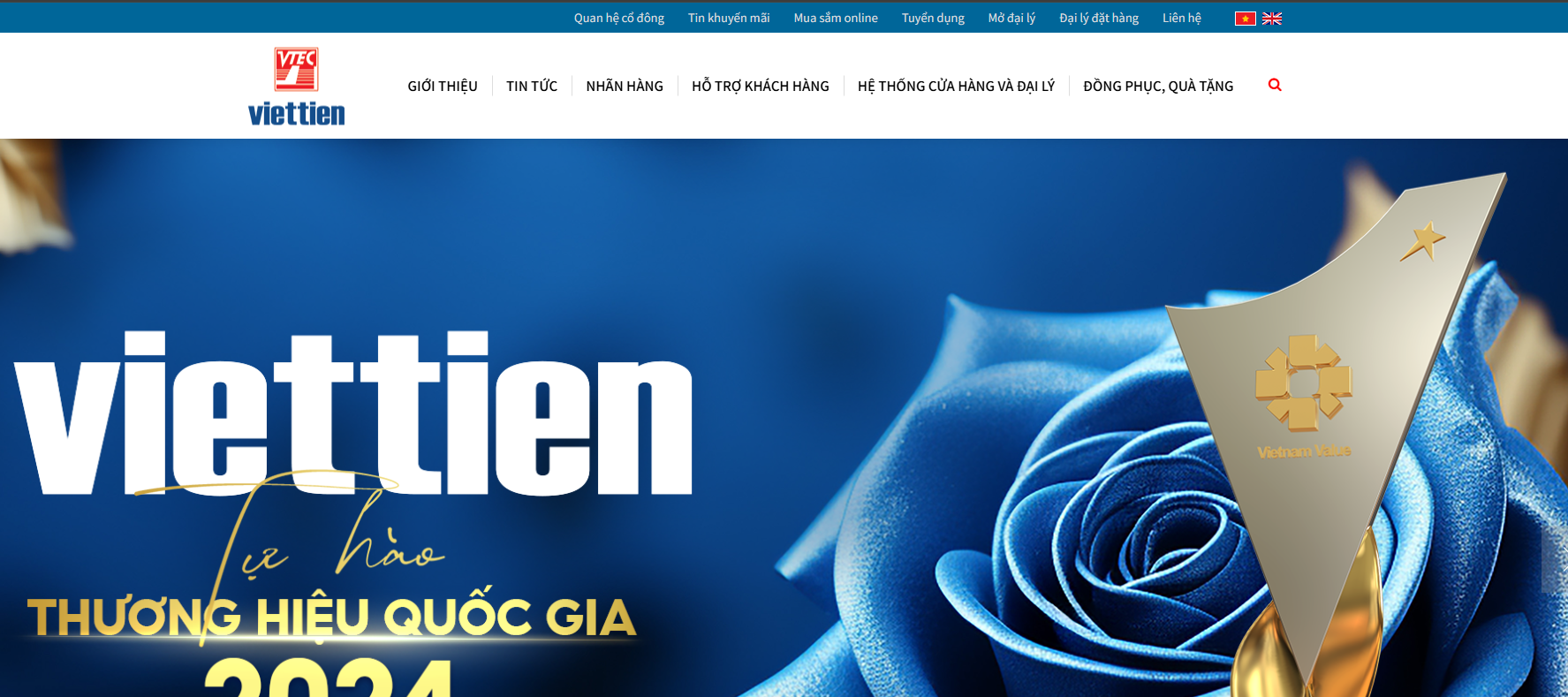
Vietnam’s textile and apparel sector is internationally recognized, and Viet Tien is one of the country’s largest garment producers.
-
Strengths: Wide range of fashion items (shirts, trousers, uniforms).
-
Best use case: For dropshippers entering the affordable fashion niche.
-
Limitation: Primarily B2B oriented; smaller orders may need negotiation.
5. Lazada & Shopee Local Sellers

Domestic platforms like Lazada and Shopee host thousands of local Vietnamese sellers. Some are open to dropshipping collaborations for both domestic and cross-border markets.
-
Strengths: Ready-made infrastructure, trust with Vietnamese buyers.
-
Best use case: Testing product demand in Vietnam’s local market.
-
Limitation: Many sellers focus on domestic fulfillment only.
6. Tiki.vn Vendors
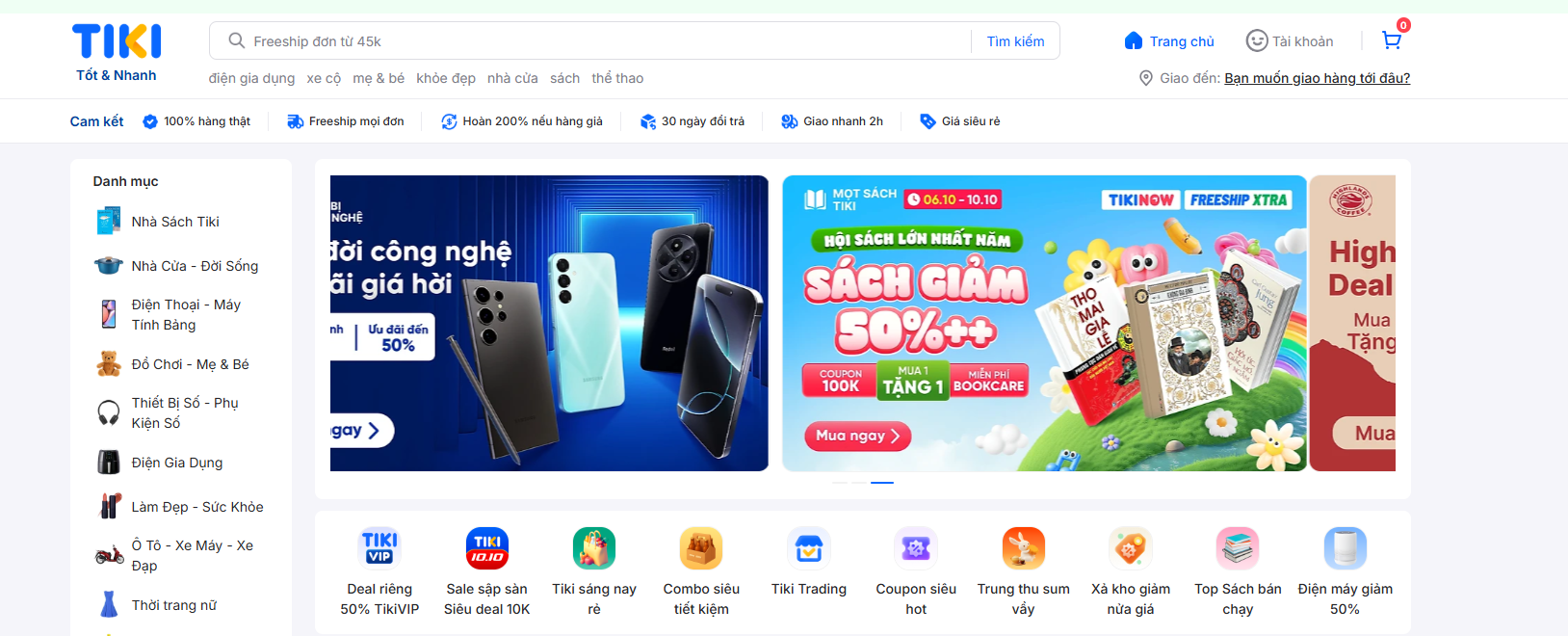
Tiki is a trusted Vietnamese e-commerce marketplace with strong penetration in books, electronics, and household goods.
-
Strengths: Reliable local sellers, strong logistics partnerships.
-
Best use case: For brands targeting urban Vietnamese consumers.
-
Limitation: Less flexible for cross-border dropshipping.
7. Vietnam Textile & Apparel Association (VITAS)
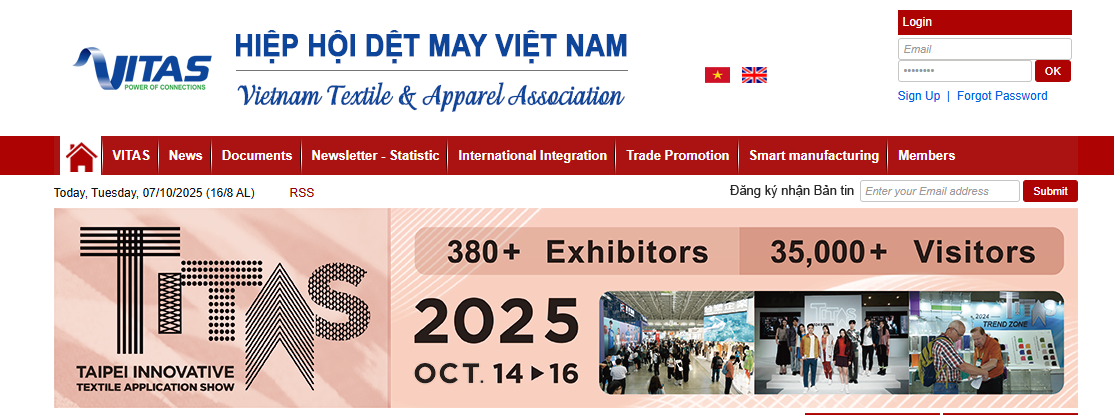
VITAS connects global buyers with a wide network of textile and apparel manufacturers.
-
Strengths: Access to mid- to large-scale garment factories.
-
Best use case: Fashion dropshippers who want to scale beyond single suppliers.
-
Limitation: Often requires professional sourcing support.
8. Sapo.vn (Local E-Commerce Solutions Provider)

Sapo offers e-commerce and logistics solutions for Vietnamese SMEs, many of which open their catalogs to dropshipping.
-
Strengths: Tech-enabled sellers, improved logistics.
-
Best use case: Entrepreneurs looking for digital-native partners.
-
Limitation: Limited international visibility; best with a local sourcing agent.
Key Takeaway
Vietnam’s supplier ecosystem is a blend of global connectors like CJdropshipping and local specialists in textiles, handicrafts, and consumer goods. For 2025, the smartest approach is to combine the reliability and automation of platforms such as CJdropshipping with niche suppliers that offer Vietnam’s unique product strengths—like eco-friendly décor or affordable fashion. This balance helps sellers lower risk, test products faster, and capture growth in both international and domestic markets.
Best Platforms for Dropshipping in Vietnam
Choosing the right platform is just as important as choosing the right supplier. In Vietnam, sellers have access to both global e-commerce platforms that connect them to international buyers and local marketplaces that open the door to Vietnam’s fast-growing domestic market. Here are the best options in 2025:
1. Shopify – The Global Standard for Dropshipping
Shopify remains the most reliable choice for entrepreneurs who want to build a branded online store while sourcing products from Vietnam.
-
Strengths: User-friendly design, large app ecosystem, and easy integration with dropshipping suppliers like CJdropshipping.
-
Best use case: Sellers targeting international markets such as the US or Europe while sourcing competitively priced goods from Vietnam.
-
Consideration: Subscription fees can be higher than local marketplaces, so it’s best suited for those serious about scaling.
2. WooCommerce (WordPress) – Flexible and Cost-Effective
WooCommerce is a strong option for businesses that want full control over their online store and payment methods.
-
Strengths: Open-source, customizable, and budget-friendly compared to hosted solutions.
-
Best use case: Entrepreneurs with technical knowledge who want flexibility to design and manage their dropshipping stores.
-
Consideration: Requires more setup and ongoing management compared to plug-and-play platforms.
3. Shopee – Vietnam’s Most Popular Marketplace
Shopee dominates Vietnam’s e-commerce landscape with the highest market share and strong mobile-first adoption.
-
Strengths: Wide consumer base, strong logistics partnerships, and aggressive promotions that drive traffic.
-
Best use case: Testing product demand within Vietnam, especially for fashion, accessories, and household items.
-
Consideration: Highly competitive marketplace with price-sensitive buyers.
4. Lazada – Strong Backing and Urban Reach
Lazada, supported by Alibaba, is a top marketplace in Vietnam with strong coverage in major cities.
-
Strengths: Reliable logistics and cross-border support through Alibaba’s ecosystem.
-
Best use case: Selling branded products or higher-quality items to urban Vietnamese consumers.
-
Consideration: Less traffic compared to Shopee but higher trust for certain categories.
5. Tiki.vn – Local Trust and Niche Categories
Tiki is one of Vietnam’s homegrown platforms with a loyal customer base in books, electronics, and household goods.
-
Strengths: Trusted by local shoppers, strong fulfillment partnerships.
-
Best use case: Niche categories where Tiki has credibility, such as tech accessories and lifestyle products.
-
Consideration: Smaller market share than Shopee or Lazada but better for specialized audiences.
6. TikTok Shop – The Social Commerce Game-Changer
TikTok Shop has exploded in Vietnam, especially among Gen Z and millennial buyers who engage through livestream shopping.
-
Strengths: Content-driven sales, influencer collaborations, and impulse-buy potential.
-
Best use case: Fashion, beauty, and lifestyle dropshippers who can leverage short-form video content.
-
Consideration: Requires consistent marketing effort and content creation to maintain visibility.
Key Takeaway
The best platform depends on your target audience. If you want to build a global brand, Shopify and WooCommerce are ideal. If your focus is on Vietnam’s domestic market, Shopee and Lazada provide unmatched reach, while TikTok Shop offers a powerful new way to connect with younger consumers. Combining a global storefront with local marketplace testing can give sellers the best of both worlds in 2025.
Top Trends Shaping Vietnam’s Dropshipping Market in 2025
Vietnam’s e-commerce engine is running hot—and the way consumers discover, evaluate, and receive products is changing fast. If you’re planning dropshipping in Vietnam in 2025, these are the shifts that matter most, plus what to do about them.
1) Social commerce goes mainstream (live + short video)
Livestreams and shoppable short videos now sit at the center of product discovery, especially for fashion, beauty, gadgets, and small home goods. Creators drive impulse purchases with limited-time offers and social proof.
What it means for sellers: Build a creator playbook: seeding products, affiliate links, and weekly live slots. Repurpose clips into ads and PDP videos to lift conversion.
2) Market growth with quality shake-out
Overall, online GMV continued to climb in early 2025, yet the number of active shops on major marketplaces edged down as weaker operators exited. Consumers are buying more often but are choosier about reliability.
What it means: Double down on fundamentals—solid ratings, fast replies, clear policies, and consistent post-purchase updates. “Fewer, better SKUs” often outperforms endless catalogs.
3) From COD to wallets (but COD still matters)
Digital wallets and QR payments keep gaining share in big cities, while cash-on-delivery remains important in second- and third-tier areas. Returns and failed deliveries are higher on COD.
Action: Offer both. Incentivize prepaid (extra voucher/free shipping threshold) while keeping COD in regions that expect it. Track COD return rates by province and adjust targeting.
4) Faster logistics in metros; variable outside them
Same-day and next-day options are spreading across Ho Chi Minh City and Hanoi, helped by urban fulfillment nodes. Lead times lengthen in remote districts.
Action: Promise realistic SLAs by region. Use split-inventory or partner micro-warehouses for metro zones, and surface delivery ETA on PDPs to cut cancellations.
5) Private-label and low-MOQ manufacturing
Vietnamese factories are increasingly open to small runs, quick sampling, and light customization (labels, packaging, colorways). That’s ideal for testing and brand building.
Action: Start with test lots (50–200 units) to validate demand, then scale. Secure basic IP (brand name, packaging design) and standard QC checklists from day one.
6) Eco-friendly materials move from niche to default
Bamboo, rattan, organic cotton, and recycled blends are winning in home décor and apparel. “Natural look” and traceable materials resonate with both export markets and local buyers.
Action: Include one sustainable line per core category. Put material callouts (bamboo, OEKO-TEX, recycled polyester) high in the bullets and photography.
7) Shoppertainment drives conversion uplift
Bundles, mystery boxes, and limited “drop” formats convert well when paired with lives, countdowns, and creator challenges.
Action: Build a monthly “drop calendar” around paydays and platform campaigns. Bundle complementary items (e.g., phone case + lanyard + screen protector) to lift AOV.
8) Compliance and platform scrutiny tighten
Authorities and marketplaces are pressing for proper business registration, product labeling, and tax compliance. Non-compliant cross-border listings face takedowns.
Action: Keep product docs handy (invoices, safety marks, material specs). Standardize compliant descriptions and care labels; align return/refund flows with marketplace policies.
9) AI-assisted creative and merchandising
Sellers are using AI to iterate ad angles, titles, and image variants, then A/B testing at speed. The winners: lifestyle imagery, benefit-led bullets, and 6–12 second hooks.
Action: Create 3–5 creative “families” per SKU (problem/solution, before/after, social proof, UGC, demo). Refresh weekly; archive losers quickly.
10) Category hotspots to watch
-
Apparel & streetwear: local tailoring strengths + fast trend cycles.
-
Home & décor: bamboo/rattan, minimalist storage, small furniture kits.
-
Phone & moto accessories: cases, mounts, wearables add-ons.
-
Beauty tools & refills: skincare devices, organizers, travel sizes.
-
Kitchen & cleaning gadgets: compact, scratch-safe, multi-use.
Action: Pick two “evergreen” categories and one “trend” lane; rotate the trend lane monthly based on live-stream data and search hints.
11) Returns, service, and transparency = retention
Shoppers expect clear sizing, real photos, and painless refunds. Stores with responsive chat and honest ETAs earn better ratings—and cheaper traffic over time.
Action: Add size/fit charts, UGC galleries, and 3–4 “real use” images. Automate proactive order messages at purchase, pick/pack, and out-for-delivery.
12) Omnichannel testing becomes the norm
Winning teams test on a local marketplace first (Shopee/Lazada), then roll the proven winners into a branded site for higher margins and export reach.
Action: Use marketplaces for demand sensing; migrate bestsellers to Shopify/WooCommerce with upgraded creative, pricing tiers, and international shipping options.
How to Source Products in Vietnam: Practical Tips
Vietnam’s supplier landscape is attractive, but sourcing here requires planning and a clear process. For dropshippers who want to tap into textiles, handicrafts, electronics, or eco-friendly goods, the following strategies can help you minimize risks and maximize results.
1. Start with Trade Fairs and Local Expos
Events like the Vietnam Expo in Hanoi or the Vietnam International Textile & Garment Industry Exhibition connect you directly with vetted manufacturers. These fairs are ideal for building trust, comparing products in person, and spotting trends before they go mainstream.
2. Use Online Platforms, but Verify Carefully
While Alibaba, Global Sources, and even local B2B sites list Vietnamese factories, quality and reliability vary. Always request:
-
Samples to check workmanship.
-
Business licenses or certificates for compliance.
-
References from past clients if available.
Never rely on pricing alone—long-term reliability is often more valuable than the cheapest quote.
3. Prioritize Low MOQs for Testing
One advantage in Vietnam is that many suppliers are open to low minimum order quantities (MOQs). Dropshippers can start with smaller test orders to validate product demand before scaling up. This is especially useful for fashion, eco-friendly crafts, and home décor.
4. Invest in Quality Control
Consistency can vary among factories. Arrange for third-party inspections or work with sourcing agents to check product batches before shipping. This reduces the risk of returns and protects your brand reputation.
5. Pay Attention to Shipping and Logistics
Vietnam’s ports are well-connected, but lead times can stretch if you’re shipping internationally. Clarify:
-
Incoterms (FOB, CIF, DDP) upfront.
-
Which carriers and freight forwarders the supplier works with.
-
Whether they can handle small parcel dropshipping directly or prefer bulk shipments.
6. Consider Niche Opportunities
Vietnam excels in certain categories that stand out globally:
-
Textiles and apparel with competitive pricing.
-
Eco-friendly materials like bamboo and rattan.
-
Handicrafts with cultural appeal.
-
Consumer electronics assembly for accessories and gadgets.
These niches can help your store differentiate in saturated markets.
7. Build Relationships, Not Just Transactions
Vietnamese business culture values long-term cooperation. Take time to communicate clearly, show reliability in payments, and maintain respect in negotiations. This often leads to better terms, faster responses, and priority during busy production cycles.
Challenges & How to Overcome Them
Dropshipping from Vietnam in 2025 is promising, but it’s not without its hurdles. Success depends on identifying the pain points early and building strategies to handle them. Here are the main challenges you may face—and how to navigate them effectively.
1. Logistics and Delivery Times
The challenge: While delivery within major cities like Hanoi and Ho Chi Minh City is efficient, shipping to rural areas or exporting internationally can take longer than expected.
Solution: Work with suppliers who already collaborate with reliable logistics partners. For international shipping, clarify transit times and costs upfront, and consider using fulfillment centers closer to your customers to cut delays.
2. Payment Preferences and Risks
The challenge: A large share of Vietnamese consumers still rely on cash-on-delivery (COD), which increases the risk of failed orders and higher return rates.
Solution: If targeting the domestic market, offer COD but encourage prepaid options with incentives like free shipping or small discounts. For international sales, prioritize secure payment gateways such as PayPal, Stripe, or bank transfers.
3. Communication and Language Barriers
The challenge: Not all Vietnamese suppliers are fluent in English, which can lead to misunderstandings about specifications, shipping, or quality standards.
Solution: Use bilingual contracts and rely on translation tools for daily communication. For larger projects, consider hiring a local sourcing agent or interpreter to ensure details are clear.
4. Quality Control and Product Consistency
The challenge: Product quality can vary between batches, especially with handcrafted goods or smaller factories.
Solution: Always request samples and, when scaling, arrange third-party inspections before shipping. Document clear quality standards and ask suppliers to confirm them in writing.
5. Competitive Market Saturation
The challenge: Categories like fashion and electronics are crowded, with many sellers competing on price.
Solution: Differentiate with niche products where Vietnam has unique strengths, such as eco-friendly décor, bamboo goods, or local textiles. Pair this with strong branding and better customer service to stand out in competitive markets.
6. Regulatory and Compliance Issues
The challenge: Authorities are tightening e-commerce rules, and foreign platforms have already faced suspension for failing to comply with local requirements.
Solution: Stay informed about business registration, tax requirements, and product labeling rules. Keep compliance documents (invoices, certificates, material information) on hand to avoid disruptions.
Final Takeaway: Is Vietnam the Next Hotspot for Dropshipping?
Yes—Vietnam is no longer just “another option.” In 2025, it is emerging as a serious contender in the global dropshipping landscape. Its mix of competitive manufacturing costs, growing local demand, rising digital infrastructure, and openness to global trade gives it a unique edge. But entering this market successfully means more than setting up a store—it demands thoughtful sourcing, logistics strategy, and cultural awareness.
Vietnam shines in apparel, handicrafts, sustainability-focused products, and increasingly in light electronics. But raw promise is only half the equation. The winners will be those who pair local supplier access with international fulfillment, enforce quality control, and build trust among discerning buyers.
If you approach it with curiosity, operational discipline, and a long-term mindset, Vietnam can be a powerful bridge to both diversified sourcing and new markets. For many dropshippers in 2025, Vietnam isn’t just a backup plan—it’s the next frontier.
Dropshipping in Vietnam 5 FAQs
1. What product categories are best for dropshipping from Vietnam?
Vietnam is strong in apparel, textiles, footwear, home decor, handicrafts, and some small electronic accessories. Suppliers are competitive on cost and good at quality, customization, and offering OEM samples.
2. Which platforms/channels work best for dropshipping from Vietnam?
Globally popular platforms include Shopify, WooCommerce, Etsy, and Amazon; for Southeast Asia, consider Shopee and Lazada. Pick platforms that support supplier integrations (API/CSV/third-party apps), local logistics, and multi-currency checkout.
3. What are typical shipping times, costs, and logistics options from Vietnam to Western markets?Express couriers
(DHL/UPS/FedEx) are fastest but costly. Economy options (postal, sea/air consolidation) are cheaper but slower. For top markets, use tracked express or DDP (Delivered Duty Paid) to reduce customer disputes and returns.
4. How do I vet and select reliable Vietnamese suppliers?
Request samples, verify business licenses and factory photos, check production capacity and MOQ, ask about lead times and QA processes, and request client references or third-party inspection reports. Use local sourcing agents or third-party QC for on-site audits when needed.
5. What should I watch for with taxes, customs, and returns when dropshipping from Vietnam?
Know the HS codes and import duties of destination countries, and decide whether to offer DDP (seller covers duties) or DDU (buyer covers duties). Have a clear returns policy—consider local return warehouses or third-party forwarders—and state tax/fee responsibilities on product pages to reduce disputes.


